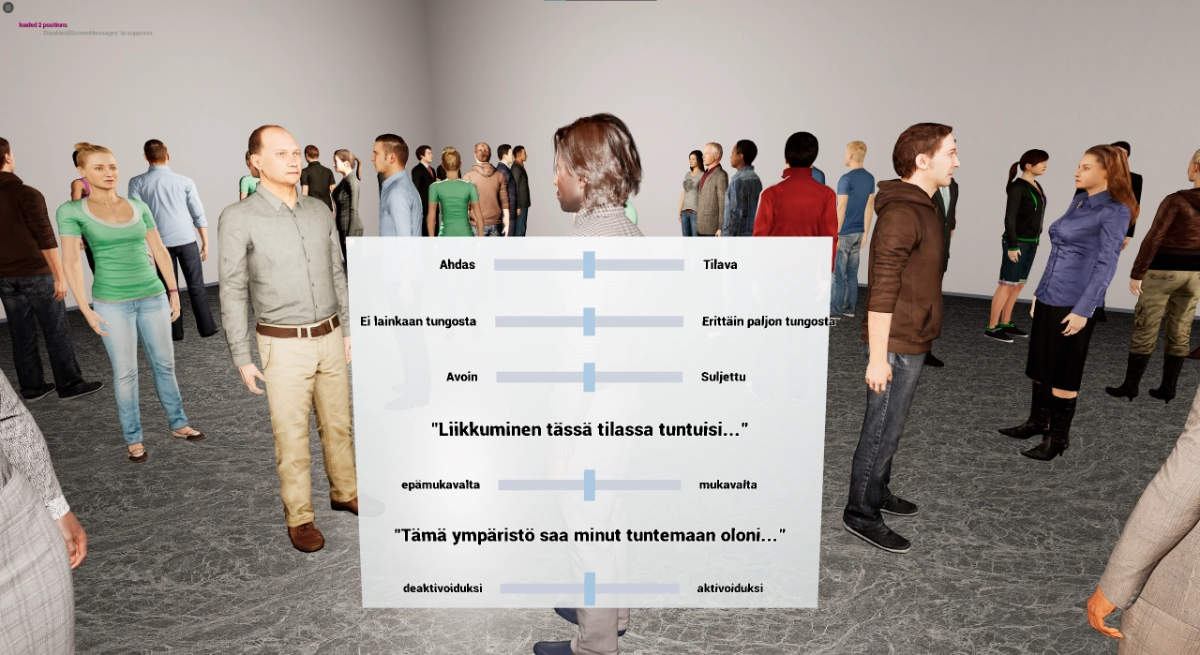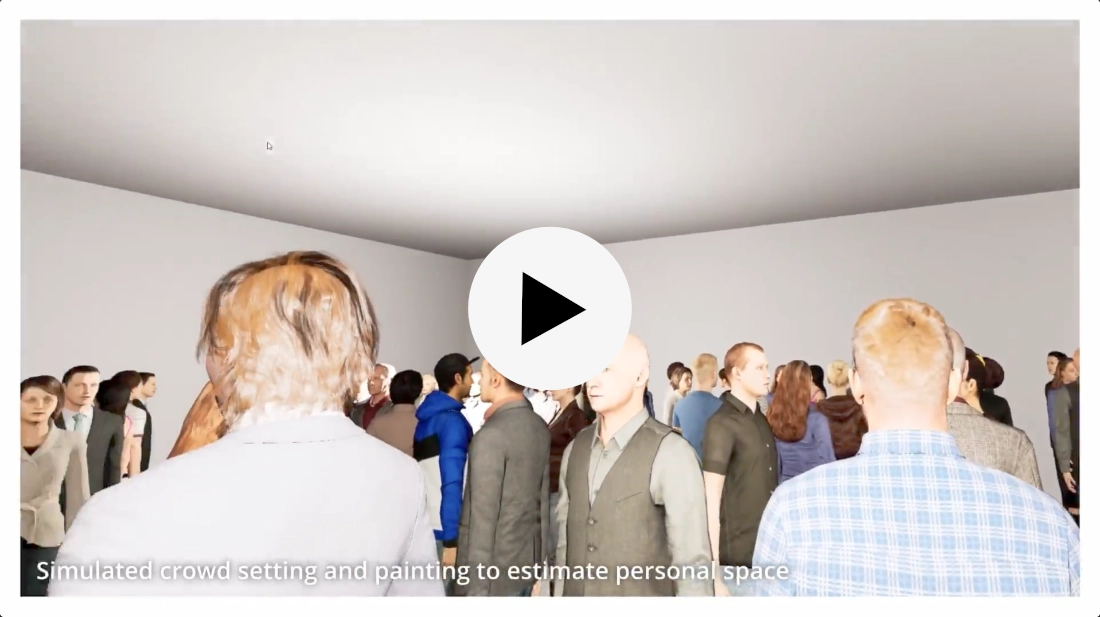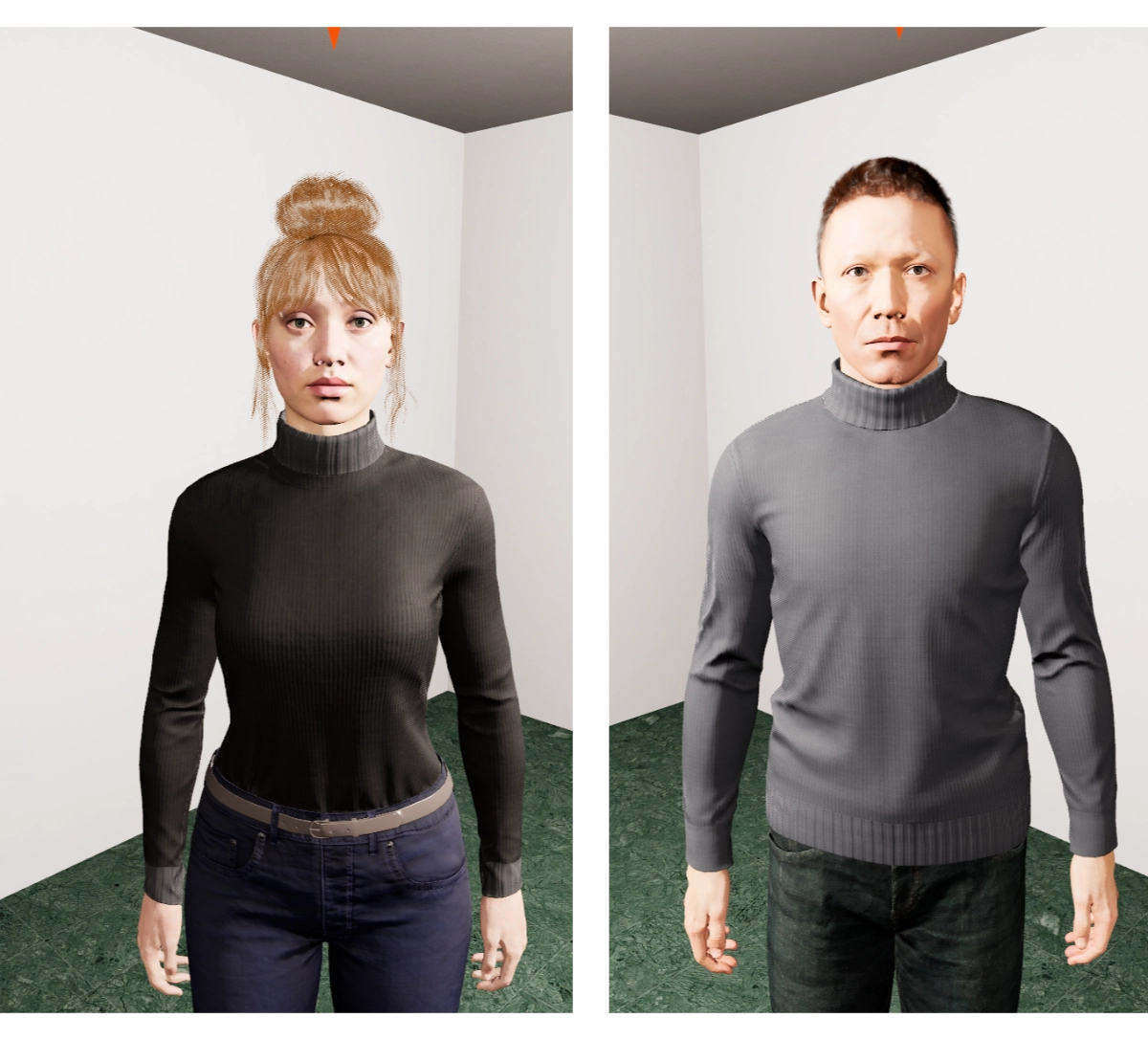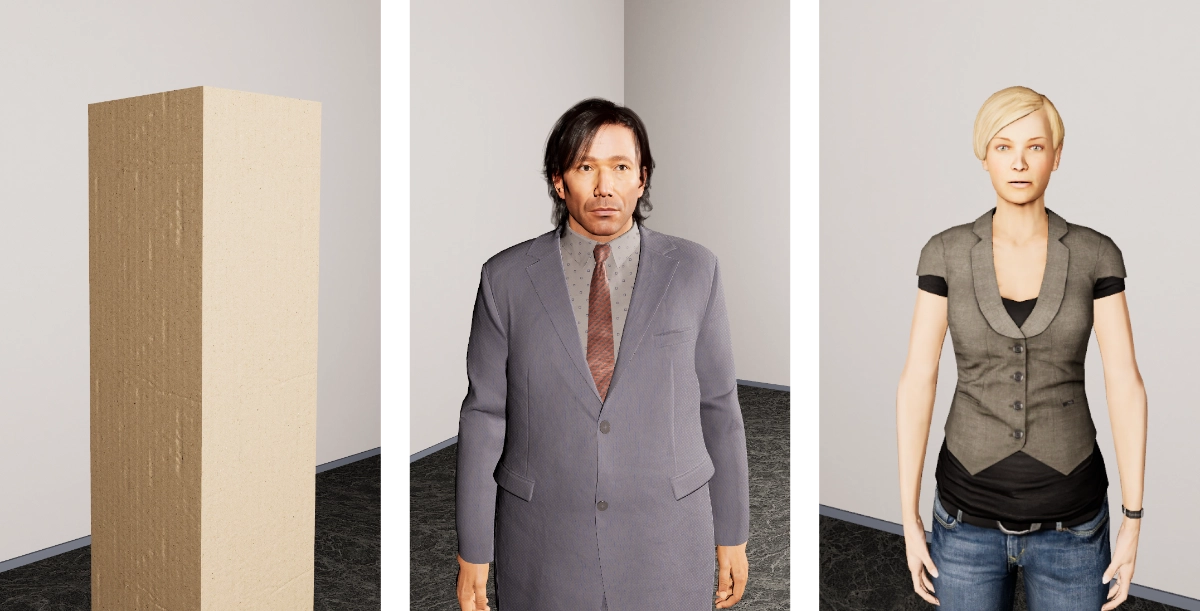VR Crowd Experience Simulator

A virtual study environment built in UE5 to simulate crowded environments for research purposes.
Tasks Completed
- Literature review
- Prototyping & development with Unreal Engine 5
- Pilot testing
- Organizing and conducting laboratory studies with (n=33) and (n=8) participants
- Data wrangling and analysis
- Reporting
Artifacts
- A robust VR study environment built with UE5
- Thesis
- (In progress) Publication
This project was initially a part of my master’s thesis, then an extended research project while I was working in the engineering psychology research group at Aalto University. The study investigated personal space regulation in relation to socio-spatial factors, namely, crowdedness and room dimensions. As done in recent psychology research, virtual reality was selected to be utilized as it offers researchers the ability to construct reproducible experimental settings. Especially considering the context of crowded environments, VR is the only feasible way to safely study the topic.
Building an immersive environment that can successfully stimulate the feeling of being in a crowd is a crucial part of conducting crowd-related psychological research using VR technologies. The environment was built using Unreal Engine 5 and streamed wirelessly to a Meta Quest Pro to enable unrestricted movement. However, streaming also limited the graphical fidelity that could be achieved. As a compromise, the crowd members were randomly generated using the city sample crowds plugin and a selection of RocketBox avatars.
In the end, despite the graphical limitations, the study’s participants reported feeling immersed in the environment and paid attention to the virtual crowd members as if they were real people. Moreover, they also behaved as if they were around real people, respecting the virtual agents’ personal space. These observations follow prior work that has been conducted on personal space and indicate that the simulator software was sufficiently immersive to stimulate social behavior. Ceiling height and room area manipulations also affected participants’ perceptions of spaciousness and enclosure as expected, though they did not affect personal space.
Within the environment, participants were asked to give their impressions of various rooms and crowds while performing tasks that measured their spatial behavior. To gather the ratings, I built a simple interface that would appear once participants were ready. The sliders on the interface could be manipulated using a virtual hand that moved with the VR controller. The second study also required an intuitive painting system for the floor. In this case, participants would point at the floor, see a marker representing the paintbrush and hold the controller’s trigger to paint.
The results of the thesis and a follow-up study will be published as a research paper.



